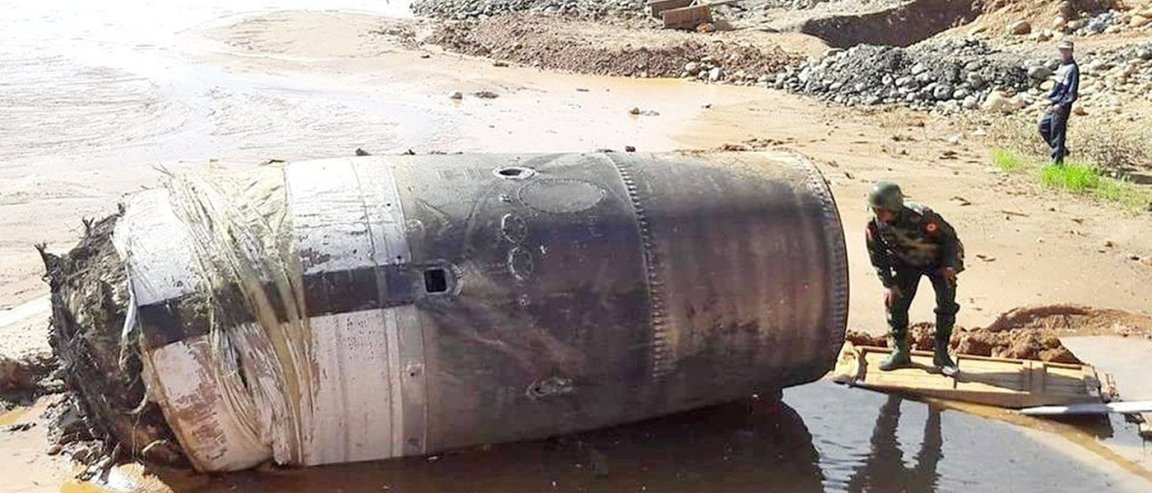
Dual Impact
A mining facility in northern Myanmar became the crash site of a huge piece of space debris last Thursday. As the impact occurred, a smaller piece of debris with Chinese markings on it simultaneously destroyed the roof of a house in a nearby village. Fortunately, no one was injured in either incident.
The larger object is barrel-shaped and measures about 4.5 meters (15 ft) long, with a diameter barely over a meter. “The metal objects are assumed to be part of a satellite or the engine parts of a plane or missile,” a local news report said. The Chinese government is neither confirming nor denying whether both pieces of space junk came from the same object.

While there may be not confirmation yet, it’s worth noting that just last month the Chinese Tiangong-1 spacecraft re-entered Earth’s atmosphere. It’s possible that these debris may be part of it.
This incident points to the ever growing problem of space junk and debris surrounding our planet. NASA estimates there are more than 500,000 pieces of debris currently floating at speeds of up to 28,162 km/h (17,500 mph) around the Earth.
Dangerous Debris
Space junk accumulation is a product of humanity’s space exploration projects. These debris come mostly from old, decommissioned satellites or discarded parts of shuttles. Because they move quickly, they present dangers to the International Space Station and other working satellites, as well as space shuttles or other human transport space vehicles.
These could also crash into the Earth without warning, like what happened in Myanmar.

Fortunately, efforts are in the works to deal with our space junk problem, such as using lasers or dust clouds. One group from Switzerland even proposed sending a satellite equipped with a special type of net to collect space debris. While these efforts are commendable, a more comprehensive solution to the issue is needed – one where each country that’s contributed to space junk allots resources to cleaning it up.
If we want to send humans to Mars or to make (near-)space tourism possible, we have to make sure space rockets are safe from potentially destructive space junk in our orbit.